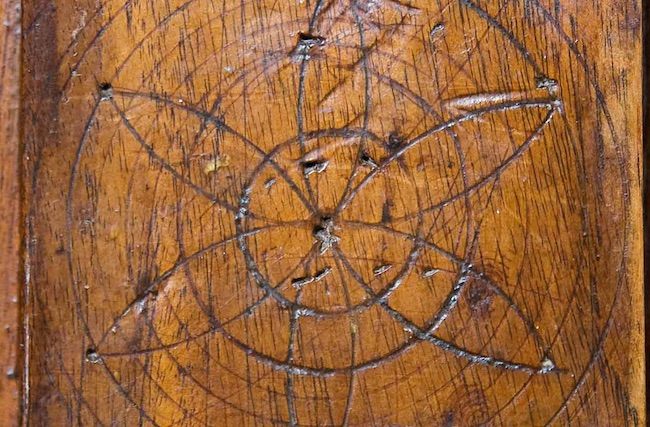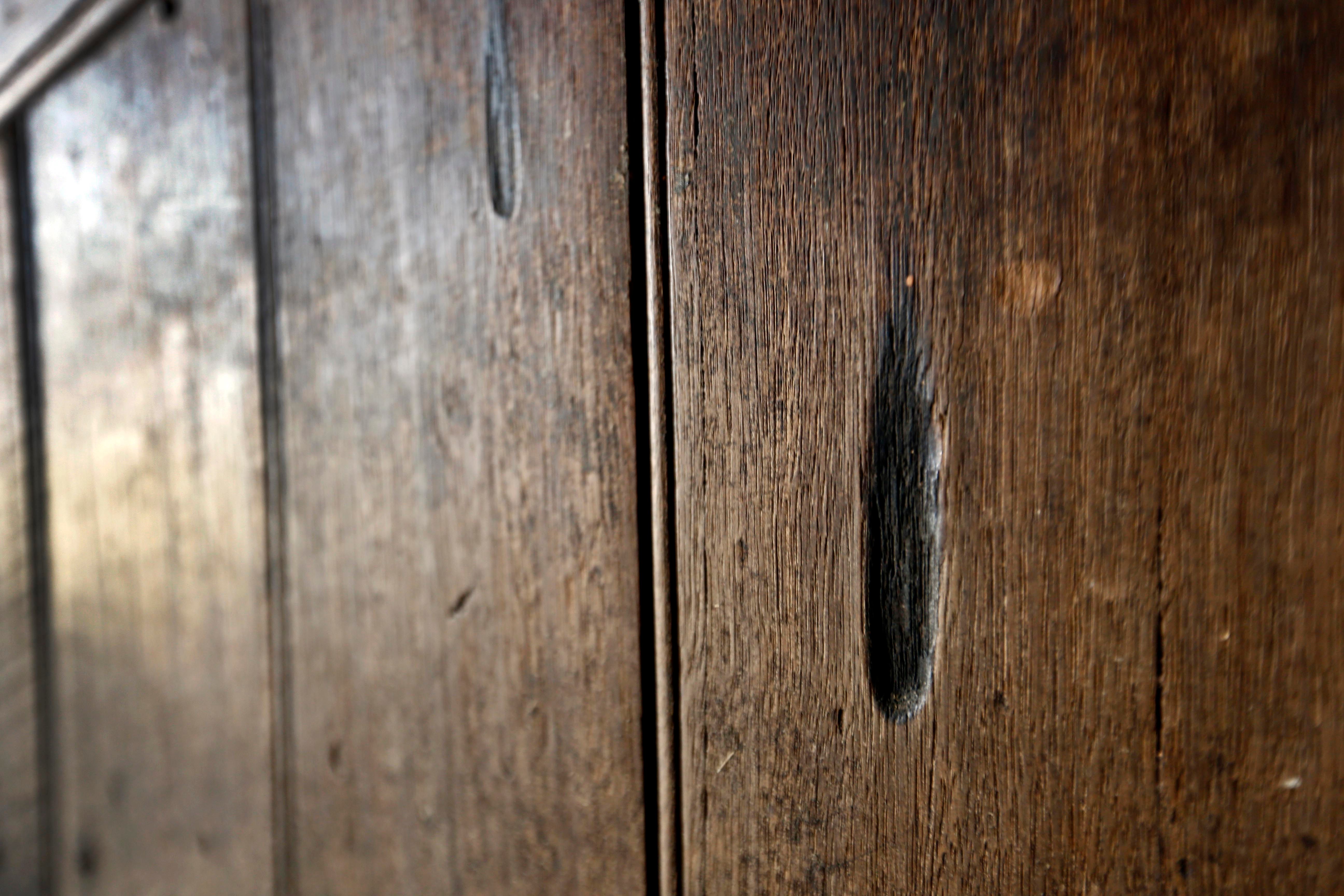Australian Settlers Used Magic Signs to Keep Evil Away
New efforts to collect evil-averting marks show they were used well into the 19th century.

Australians weren’t supposed to have used magic. The first British settlement on the continent was founded in 1788, at a time when superstitious practices and beliefs were thought to be dying out, replaced by rational, enlightenment thought.
But, in the present day, after Ian Evans saw his first apotropaic marks—ritual signs meant to avert evil—in England, he started looking for them in Australia, too. “On a casual sort of visit,” he says, he found one in the stables of Shene, a historic estate about 30 minutes of Hobart, the capital of Tasmania.
“Wow,” he thought, “they’re here, too.”
Evans is aiming to more thoroughly document apotropaic marks, through a new Tasmanian Magic Project. Though they were once commonly used, these symbols have never been systematically recorded, in Australia or in England, where they are better known. For years they were overlooked or dismissed as marks made by craftsman in the assembly of a building.
But as scholars begin to better understand what they call the “material culture of building magic,” there are new efforts to collect and understand these evil-averting signs. In the U.K., Heritage England put out a call this past fall for examples of ritual marks and received more than 600 responses. Evans’ project will have its first field season this coming March, and if the project raises enough money, there will be two more later in the year. The goal of these projects is to better understand how and why these symbols were used and to tease out the ways English-speaking people used magic, long after they were thought to have given it up.
Apotropaic marks are sometimes called “witch’s marks,” although Evans prefers to call them “evil-averting marks” (since there’s no evidence that people in Tasmania believed in witches). One of the most commonly found is the hexafoil or “daisy wheel,” seen above. Created with a compass, the shape forms a continuous line. It was thought that evil would be attracted to these shapes and get caught in an endless maze.
Other marks are “Marian symbols,” associated with the Virgin Mary, and burn marks created purposefully with candles. They have been found in churches and houses, barns and caves, often by some sort of opening to the outside world, whether a window, doorway, or chimney.
These signs were meant to protect the people within from the evils that might sneak in. They were part of an artillery of tools that could be used to fight evil, which included witches’ bottles, pierced and baked hearts, written charms, and objects, usually shoes or clothes, concealed in the walls of a building.
Since he starting finding evidence of magical practices in Australia, around 2004, Evans has spent years collecting examples of these rituals; in 2010 he completed a dissertation on concealed objects that were hidden in the walls and hearths of houses to protect against evil.
Evans can’t say for sure that this brand of British magic came to Australia with the First Fleet, as early as 1788. “But there’s a good chance that it did,” he says.

But he realized, he says, that concealed objects were only part of the story of the practice of magic in Australia. In his original research, he found apotropaic marks in a series of buildings, and he’s convinced there must be more. In his preliminary investigations in Tasmania, he’s found burn marks in three stables. “In the stables of one house, there are seven horse stalls, and we found 58 burn marks in there,” he says. “These weren’t the result of some stable hand leaving his candle in the wrong place. They were deliberate.”
Burn marks might have been used to inoculate a building against fire or lightning. These signs were meant to protect people against forces, of one sort of another, that they couldn’t control. Australia in the 19th century was a scary, uncertain place for colonizers, who feared convicts, bushrangers, and Aboriginal people. Making protective marks may have offered settlers some certainty and relief. “I think they were motivated by fear,” says Evans. In his dissertation, he writes, “Folk magic gave emigrants and exiles a sense of control at a time when their grip on this world seemed fragile indeed.”
Evans is focusing on Tasmania because it has one of the highest concentrations of heritage houses in Australia. Some of these houses have been in the same family for generations: at one property, the eighth generation of the same family is still living there. In this part of the country, houses remain relatively unchanged, and there are still traces of the past to be found, by those who look carefully.















Follow us on Twitter to get the latest on the world's hidden wonders.
Like us on Facebook to get the latest on the world's hidden wonders.
Follow us on Twitter Like us on Facebook